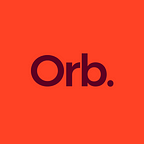As we come to the end of yet another lockdown, it’s worth pointing out that the pandemic has created a number of upsides — the biggest being how it has put skates on a number of critical consumer trends.
Decades in weeks
eCommerce’s share of retail escalated at such a rapid pace during the pandemic that we have now reached the predicted penetration of 2030 in the US. Share was growing at 1% every year in the US, at the start of 2020 about 16% of retail took place on digital channels, then, just 8 weeks after the pandemic arrived in the US, this jumped to 27%. 10 years of growth in 8 weeks!*1 and we have seen a similar trend in the UK.
This same level of acceleration has played out in other areas, with positive and negative results. Healthcare has been ripe for innovation for many years, we have been forced to go into surgeries and see GP’s for the mundane as well as the serious, and suddenly, overnight the adoption of telehealth has exploded — 11% of US consumers used telehealth in 2019, this jumped to 46% during the pandemic and continues to climb. *2.
We see similarities in the business world; working from home has been considered but dismissed due to fears of a decline in productivity, technical challenges, or the reality that some things are just more effective in person. Then along came the pandemic and rapid adoption took place overnight with very little drop in productivity for many, as we all found workarounds. As a creative agency, our biggest concern was losing the creative vibe we all have in the office, but whilst meeting over Zoom isn’t perfect, we have made it work for us and found digital tools like Oroson to enable and fuel our creative discussions.
Looking at retail, if you sell essential goods, your goods are more essential than ever. In the grocery sector, pre-pandemic most people preferred to go to the stores to select the freshest produce, but the number of UK consumers who order their weekly groceries online has doubled since lockdown. 25% of consumers now buy food and essentials at least once a week online, while more than 75% order at least some of their regular household goods from supermarket websites — up from 61% last year, the research from Waitrose outlines.
The most interesting growth in online grocery shopping, according to the How Britain Shops Online report, is in the over-55 age group. Nearly 25% of this group now buy food and essentials online, compared to just 8% in 2019. Once again, we see a behaviour change that should take decades happening in weeks.
Something many of us can perhaps relate to — the report also reveals that people have been buying more wine online during lockdown. Orders via Waitrose Cellar are up by 238% and just over 25% of alcohol is ordered between 11 am and midday for delivery later the same day — perhaps a boozy lunch is on the cards for many working from home….
These grocery trends are huge and irreversible as habits have been altered permanently, plus they have required a big infrastructure shift that will outlive the pandemic.
Let’s take a look a higher education, like Healthcare, this has been ripe for disruption for many years. Tuition fees are a fairly recent reality in the UK and whilst they are nowhere near the US’s colossal fee structure, it’s still creating student debt and many students were already questioning whether they got value for money due to a challenging job market. Fast forward to the pandemic and the overnight shift to online learning, that very few were ready for and the majority of students are underwhelmed. According to Natwest’s Student Living Index 2020, only 10% found value in online education for the amount of money spent on tuition. The whole university experience is different and for many, the online education experience is left wanting. There is likely to be a deluge of new tools and new technology to help higher education improve their offering in early 2021. Here’s hoping.
Lastly, on a personal level, if your partner was driving you mad before lockdown, your rows have escalated, however, if you manage to survive living in such close quarters through these multiple lockdowns, chances are you will get through anything.
However we view 2020, it has shaped up as one of the most disruptive years for centuries. COVID- 19 is not just a threat, it has presented us with opportunities we can all make the most of. At Orb it’s made us disrupt our service offering and fast track the way we deliver our services. We created a new product, Plan B, the B stands for Better, but shorter. And of course, the meaning of Plan B is something that is executed when Plan A isn’t working, and that’s what this process is designed to do. Plan B is a shortened, stripped back version of standard agency processes to help you quickly seize new opportunities, re-shape and relaunch existing brands so you can grab market share and blast off from your competition. If you’d like to hear more about this then get in contact with us — https://www.thisisorb.com/contact-us/.
Sources
This post has been inspired by Scott Galloway’s latest book Post Corona
- 1 Bank of America US department of commerce, Shawspring research
- *2 McKinsey COVID-19 Consumer Survey, April 27, 2020
